This island is so deadly that it’s been banned from travel—until now
Science

1. A grisly folklore
Defense.gov/iStock
Many islands are tropical paradises most of us love to visit—Fiji, O’ahu, the Bahamas. Others are homes to their own thriving populations like New Zealand or Australia. But others, as this island shows, are terrible, ghastly places. They inspire fear of the sharpest caliber, and a feeling of dread that would shake even the most brave. Read on to find out why even the Brazilian Navy frets going to this place.
Locals have an odd perception of this mysterious island. While to many onlookers, it appears like your regular tropical paradise, those who live nearby see something drastically different. Apocryphal folklore is common in tales from locals. You have the hobbits, for instance—humans that lived around 10,000 years ago that the locals had generated folklore around.
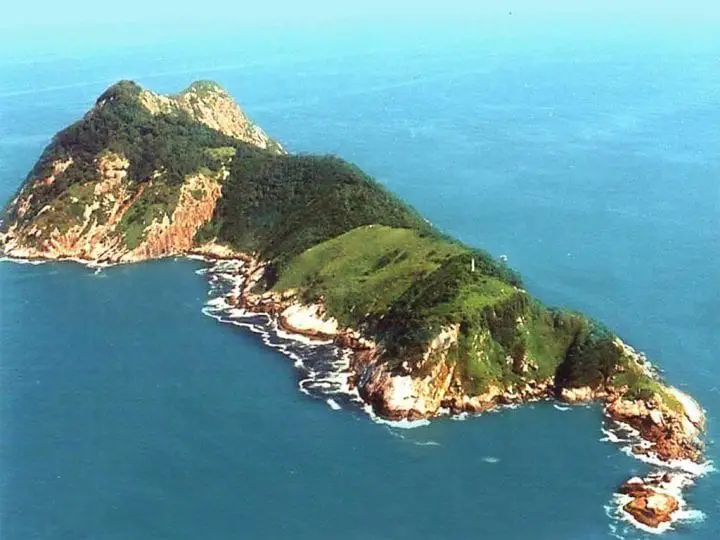
Viagens Tentadoras
For the tribes of the Indonesian island Flores (where these hobbits existed), they had suggested the diminutive humans played, frolicked, and capered along with their ancestors. While this may have been the case some of the time, the truth is more likely that these creatures were cannibalized. Anyways, the lore around this island is similarly macabre; so what’s its sinister secret?
2. Two people enter, zero leave
One tale, for instance, speaks of a duo that sought to retrieve some bananas from the island. Bananas are a common tropical delicacy, growing in most parts of the tropical world. These people saw an abundance of these within the dense, lush verdure of the island, and decided to act.
Maxpixel
So, naturally, they pulled their skipper close and made their way toward the trees. What happened to this duo is not entirely known. It’s also true that the story might be a local myth. Regardless, the folklore states that these people never made it back. Instead, their boat was found abandoned and derelict. This isn’t the only lore surrounding the island, though.
3. The island
The island is located off the coast of Sao Paulo, Brazil. It’s about 90 miles offshore, and something you wouldn’t necessarily consider a place of nightmares. The island is called Ilha da Queimada Grande (which roughly translates to “slash and burn fire”), and thick with tropical wonder. But beneath this wonder lies something insidious.
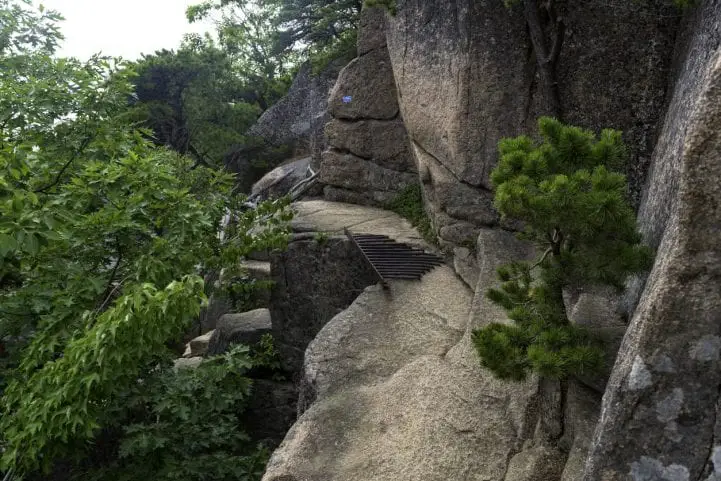
iStock
But before we can get into that insidiousness, we want to articulate more clearly the scary vibes that this place exudes. It includes everything from missing people to, well, more missing people. And in most instances, these people were never seen again. This is especially disconcerting knowing that the island is so small.
4. Missing: gone from the lighthouse
As with many islands off the coast of the island borders, this one was used to feature a lighthouse. Unfortunately, the family that inhabited the lighthouse went missing. The story behind this scary tale is that they ran out of food and, like the other hapless fellow of this story, went to go pick some bananas.
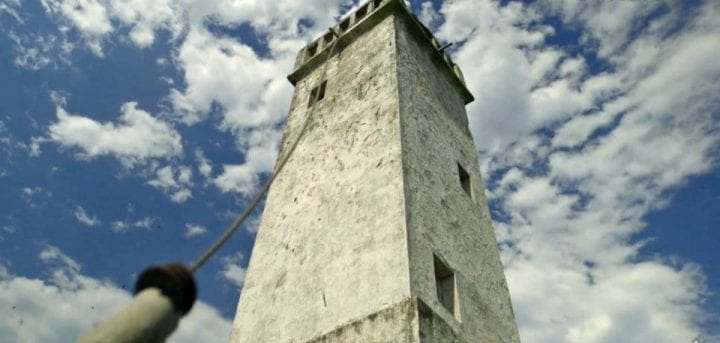
WTF Club
When the family had gone picking, no one had returned. The results of this unfortunate escapade were an unmanned lighthouse and—eventually—a ban on entry into the island. This was put into place after the military found the people missing. But also because of a few of the other things they found.
5. The initial failed attempt
The initial intent for this island was to turn it into a banana plantation. The reasons for this were clear: it is in a perfectly lush location for such growth, it is close enough to the shore to make it financially viable to travel there, and, well, it had the land.
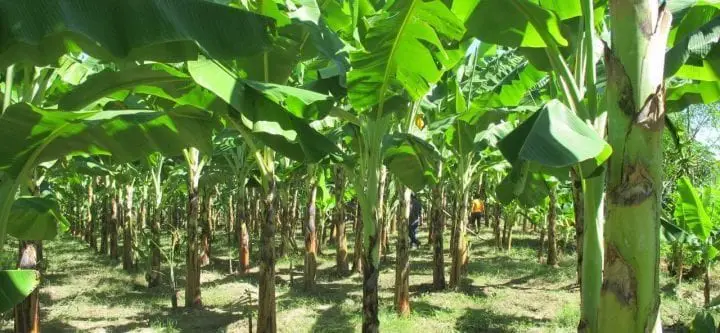
Defense of the Republic of the Philippines
Unfortunately, this attempt didn’t work. For the most part, that’s why it was named something that translates to slash-and-burn island. The failed attempt left foliage that would eventually grow over to support more lush greens. They burned this foliage down to the ground. It was, however, grown over again. Then it was filled with something dismal.
6. Slash and burn
Slash and burn was the attempt these early farmers had made to try and make the island inhabitable for food—i.e., bananas. The technique works by killing off all the vegetation that exists in the area, and then by burning what remains. The slash and burn on this island, however, was attempting to get rid of something far scarier than bananas.
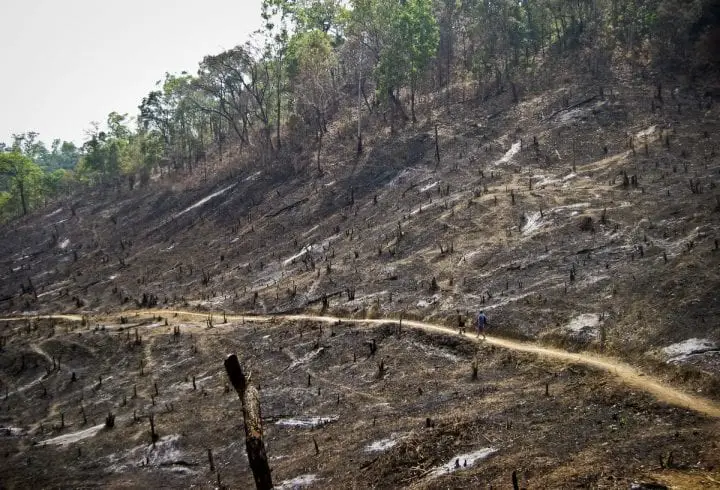
Wikimedia
The results of slash-and-burn are normally advantageous for crops, since the remains of the burned vegetation are nutrient-rich. And this why the technique is often employed by rural farmers seeking to reduce the amount of land dedicated to greenery and increase the amount dedicated to planting crops. Unfortately, this tactic is also disadvantageous for the environment.
7. When slash-and-burn doesn’t work
The point of this tactic was to prevent something scary from making the island so uninhabitable. Unfortunately, this thing was able to avoid the tactic by hiding in caves and other unvegetated places. And because of this, they had to abandon their early plans to turn the island into a place for bananas.
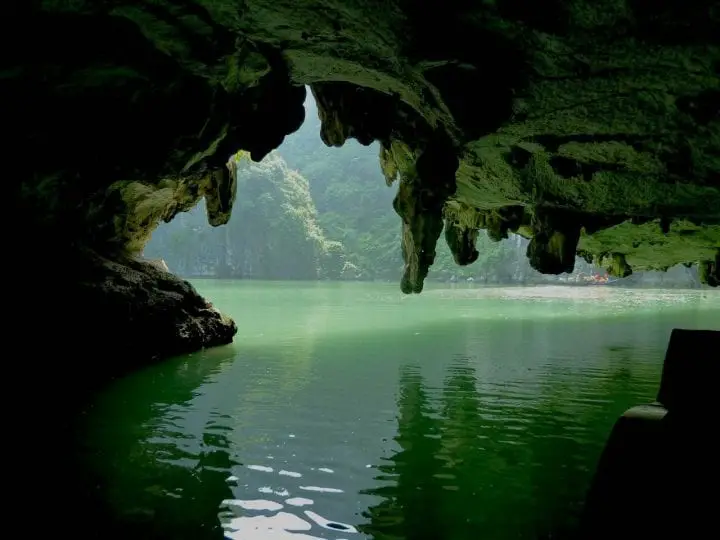
Watts
But what, exactly, was it, that these insipient farmers were trying to get rid of? Well, the answer is not something you’d want to accompany you on your typical tropical vacation. In fact, it’s one of the most feared things on planet Earth. And this is the main reason why you will never visit Ilha da Queimada Grande.
8. The worst island ever
The reason this island is terrible is abundantly clear once you step foot on its shores: it has such a great number of snakes—yes, snakes—that you will encounter one every couple of steps. And of these snakes, you will find one of the most poisonous that exists. This snake is the golden lancehead.
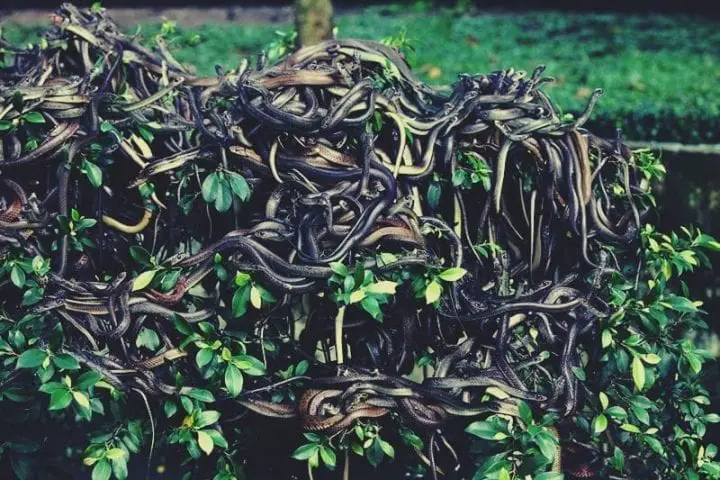
Humor Nation
And if you don’t find that terrifying, you probably don’t exist. Everyone, in other words, will find this island terrifying. There are so many snakes that you’re bound to encounter one every three cubic meters. The island is so dangerous that you’re not even allowed to travel there. It is, in other words, illegal to visit. And with good reason, the sheer number of slithering scoundrels is more than you think…
9. Banned because of danger
The island is banned to all who would like to step foot on its snake-infested lands. The reason is that it is, clearly, dangerous. If you anticipate visiting the small island, then, you will have to get a pass from the Brazilian government. Good luck.
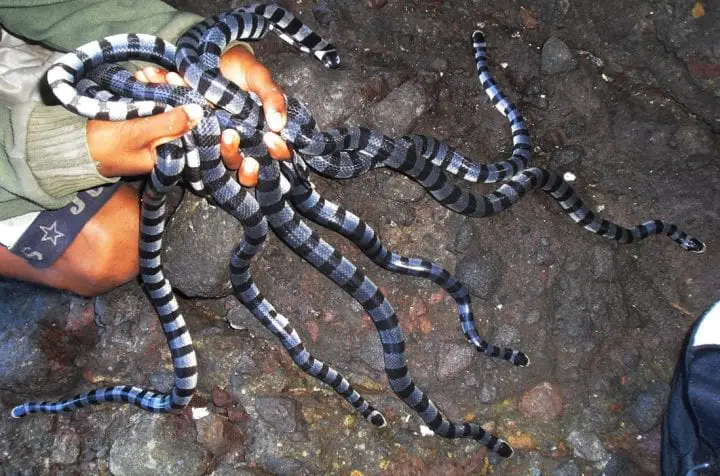
Boredom Therapy
Vice, for instance, acquired this special visitor’s pass. It enabled the team to travel to the island to film a documentary. Other people that have somewhat regular access to the island are researchers. The reasons for this research is to study a certain subset of species that exist within the island. This snake is notorious for being one of the most deadly snakes on Earth. Just how deadly is it?
10. The Golden Lancehead
The Golden Lancehead is one of the most venomous snakes on planet Earth. It is thought to have enough venom to kill two full-grown adults within the span of one hour. And this doesn’t exactly happen in the most palatable way possible. In fact, it sounds like one of the worst possible ways to go.
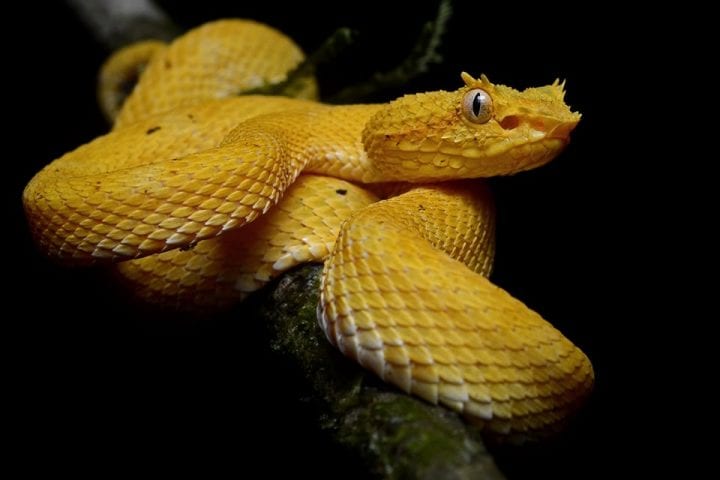
ViralSpell
The venom of the golden lancehead will disintegrate the flesh that exists around the wound. The decay will become visible rather soon after the point of contact. This unseemly fact is in part why those who visit the island must visit with a registered doctor. Thank goodness.
11. The highest concentration on Earth
Another terrifying thing about this island is that it has the highest concentration of snakes out of any island on Earth. This dense concentration is the result of biogeographical distribution and evolutionary isolation. The snakes on the island have no naturally occurring predators. This should inspire a great, exasperated “yuck” in everyone.
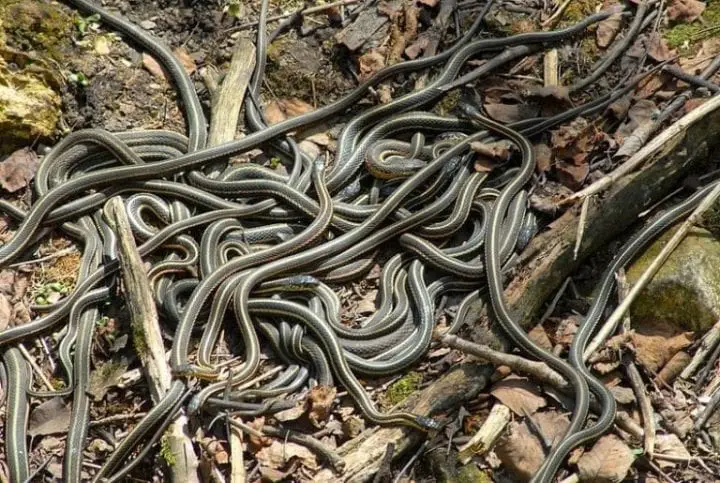
EcstasyCoffee
Because of this, they’re essentially able to evolve in whichever evolution pleases. This means that the variety of species will blossom extravagantly. This is often why you see a vast assortment of species on island habits. It’s also why Darwin was so fascinated by the Galapagos’ finch species.
12. Fears and tears
The island is so scary that even admirals in the Brazilian Navy would refuse to go. And thankfully, they have the power and pull such that they would never be assigned to. Lucky them. Anyways, their underlings aren’t so lucky, receiving training and special skills that enable them to traverse the dangerous grounds.
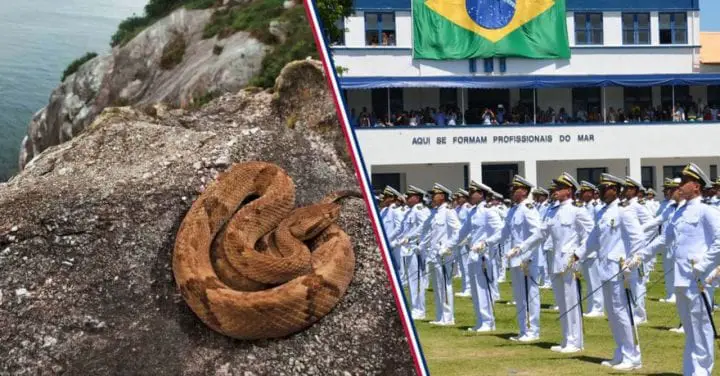
We Are The Mighty
While they are trained to avoid the snakes, it doesn’t really help. You can only do so much to avoid such a giant and densely-aggregated snake population. And, if you do get bitten, training can’t really help prevent the spread of the venom. While you can do things to lessen its travel, it ultimately won’t help.
13. Doctors’ approval
Because of the prevalence of snakes on Snake Island, anyone who goes there must be accompanied by a doctor. The theory is this: if you get bit by a snake, the doctor can provide an antivenom so that the damage doesn’t kill you. With animals like the golden lancehead, you probably won’t be afforded such a possibility.
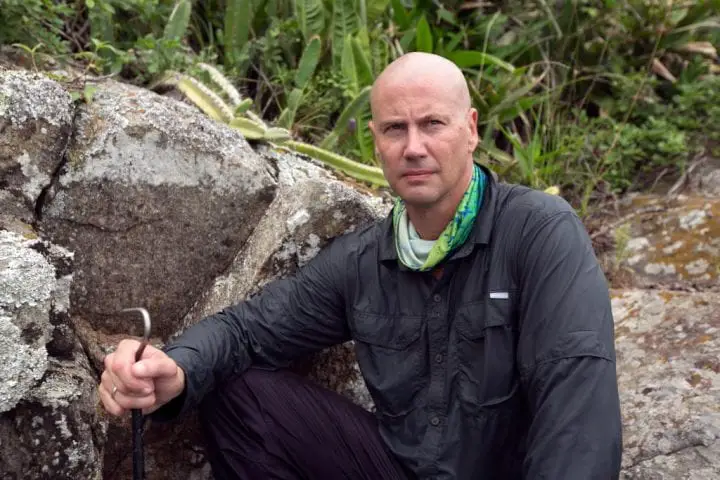
Discovery
With other snakes, however, you might enjoy enough antivenom to prevent the bite from being fatal. The golden lancehead will afford no such privilege. Having evolved to secrete a venom that will paralyze and kill quickly, it is not the snake you would want to attempt to charm.
14. Evolved venom
The golden lancehead’s venom evolved to be so poisonous because of the environment in which it lives. Having migrated to the island a little over 10 thousand years ago, they had ample time to evolve specialized tools for attacking prey. And the prey they had to attack moved fast.

Sick Chirpse
The main item of prey on the doomy Snake Island isn’t human flesh. Instead, it’s avian. Since the island is remote and isolated from the mainland, the only animal that really visits is the bird. And because of this, the snakes had to evolve a venom that could kill and kill quick. You wouldn’t want those birds to fly off after having been bitten.
15. The birth of terror
So where, you ask, did this island and its horrid snake population come from? Well, that question has two answers. The first of which involves geology and the natural processes within. The second involves pirates. Let’s start with the first—those natural processes that carry animal from place to place.
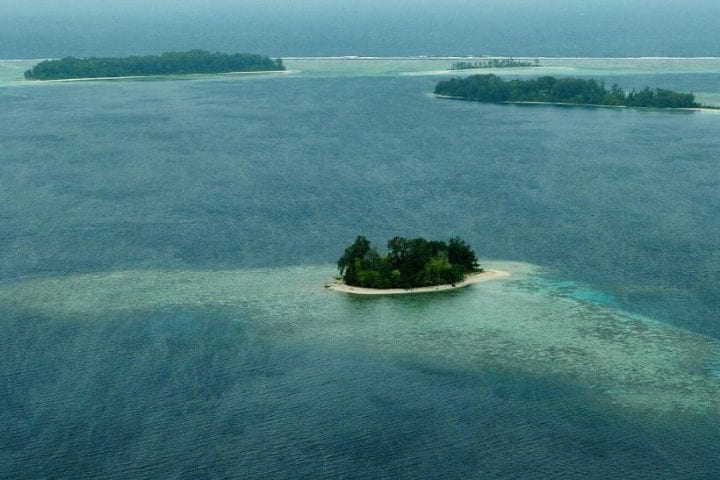
International Business Times
The island formed something around 11 thousand years ago when sea levels rose. This was due to the last ice age. The result of this change in sea level was the isolation and island-i-fication of Snake Island. Once this happened, a subset of species was isolated to the island and left to grow unique. And thus, Snake Island was born.
16. Pirates, pirates, and more pirates
Legend has it that the island got these snakes not from biogeography—the natural distribution of animals due to geological processes. Instead, it suggests that they were put there by pirates. And why, you ask, might pirates have placed this most slithery of beasts on the island?

International Business Times
Well, you could probably answer this question yourself. Why do pirates do anything? Is it for the greater good, or is it for that pirate booty? Well, more often than not, it’s for that pirate booty. And, like with most instances involving pirates, that seems to be the case here. The snakes, then, were put there by some booty-guarding pirates.
17. Pirate booty
Folklore around the island suggests that the snakes were placed there by pirates to protect their buried treasure. This seems to be a common explanation for dangerous things when they’re found. Regardless, this is not necessarily the most accepted explanation for the snakes’ arrival.

Metasearch Search Engine
Despite this fact, the Discovery Channel has hosted a show, Treasure Quest, that has dedicated an episode to Snake Island. And, as it joys us to say, their show was unfruitful in unearthing any treasure. Even though every attempt to find treasure on this island, others have found another illegal way in which to gain from its terror.
18. Bio-piracy
Other types of piracy exist on snake island. And this is piracy of the bio persuasion. And what this means is that people are often caught smuggling the snakes to sell back on the mainland. The reasons for this are somewhat disturbing. People like to own venomous snakes—why?? They also like to harvest their organs—why??? (Just kidding about this last part.)
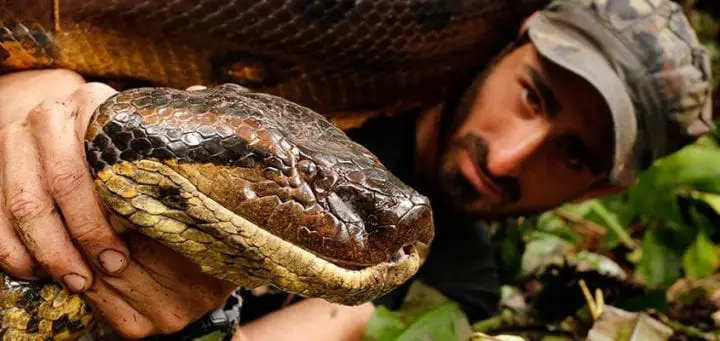
Just A Thought News
And since snakes like the golden lancehead are extremely rare, they sell for a hefty price. This fact has led to a massive dwindling of the indigenous snake population. It has gone, in other words, from a drastically high 4,000 to something like 2,000. This makes us unbelievably sad for one of Earth’s most impressive and important species.
19. Remedies for piracy
One way that the Brazilian Navy has attempted to reduce the number of snakes lost to bio-piracy is to place cameras alongside tree branches and in the bushes. The hope is that such attempts will capture the image of those who attempt to steal. It’s not an attempt in vain.
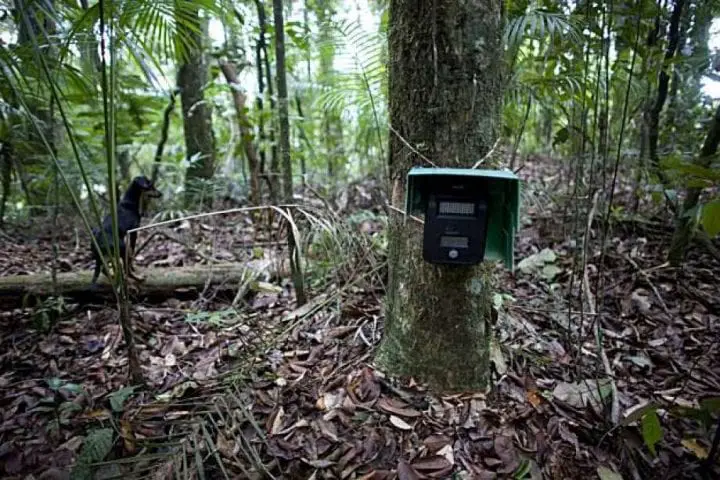
SFGate
With these photos comes the ability to capture the pirates—or, at least to post their image somewhere such that they can eventually be identified by the authorities or shifty friends. Either way, travel to the island will entail the finding of such cameras. Smile, because they are likely triggered by motion.
20. Research
Many a researcher, for instance, has been accosted by those who would like to take the snakes and sell them on the black market. According to reporting by Vice, some of these pirates have offered a price as high as 30 thousand dollars a snake. That is quite the pretty penny, but it’s to the detriment of a vital natural habitat.

WITI
While researchers are often taking the snakes for the purposes of creating antivenom, others are not. This is also in part why travel to the island is illegal: authorities don’t want people to get on it to steal its rare snake population. Regardless, the problem is bad, and the sentence—if caught—is heavy.
21. Actual research
The actual research on the island is aimed at generating antivenoms. Many also believe, for instance, that the rare chemical formula that makes up the golden lancehead’s venom might provide novel remedies to curable diseases. One institute in particular does this is in Sau Paulo.
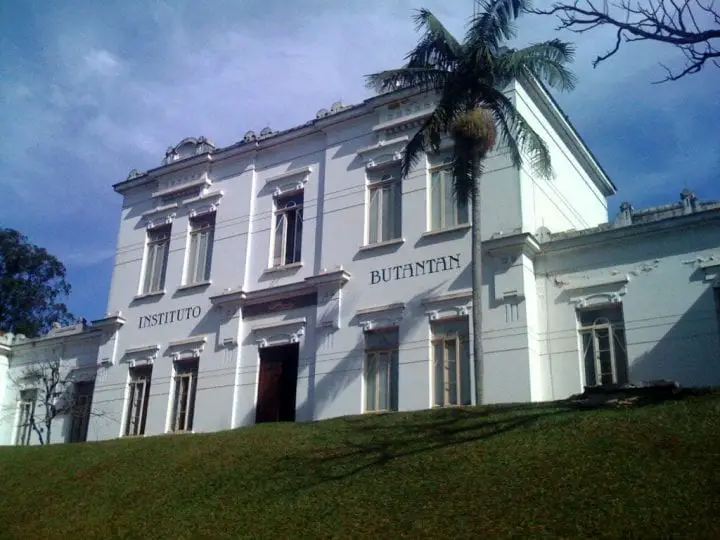
Brazil Tours
This institute is the Butantan Institute. The main focus of this institute is to provide research on the dwindling population of rare snakes in conjunction with the formulation of antivenoms for Brazil’s more terrestrial bites. This makes sense once you consider the snake to which the golden lancehead is most closely related. This snake is the golden lancehead’s more terrestrial cousin, the lancehead.
22. The lancehead
The golden lancehead is most closely related to the lancehead species on Brazil proper. And it’s this species from which the golden lancehead, its drastically more venomous cousin, evolved. The lancehead had, in other words, made its way to the island, and slowly evolved into the golden lancehead.
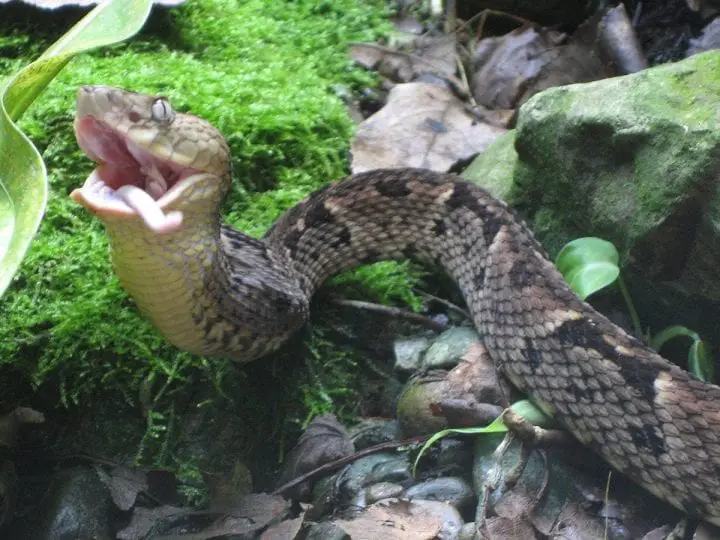
Wikipedia
The lancehead species is responsible for something around 90 percent of the domestic snake attacks in Brazil. While the snake is not nearly as venomous, it is still responsible for most of the deaths due to snake bites in Brazil. If you anticipate visiting, then, it’s probably smart that you watch the ground and trees. Snakes might be lurking.
23. More on the golden lancehead
The golden lancehead, in case it hasn’t instilled you with fear yet, has other specs that make it even more repellent. Among these are things like its length. It is, in other words, a staggeringly long 28 to 46 inches long. If you find one of these snakes and it’s about the length of a full-grown toddler, I’d be afraid.
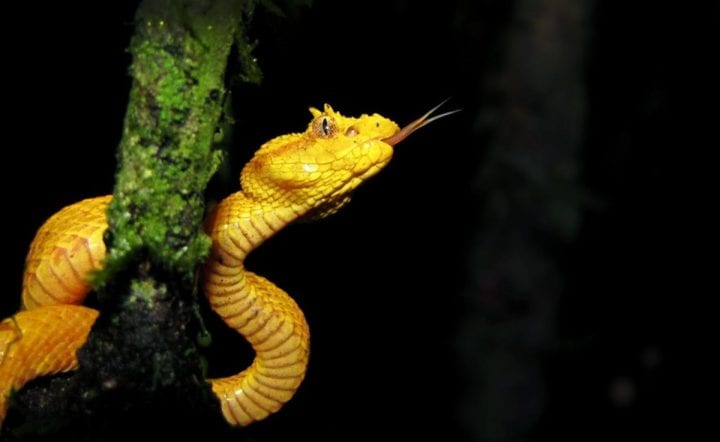
iExplorer
But other than that, the snake hangs out in trees. This makes sense once you consider the primary target of most snake species—birds. So, if you’re walking around in the lush and overgrown forests of the Snake Island verdure, you might expect to walk right into one of these dangling foes. The result would surely be unfavorable.
24. Necrosis and other unpleasant things
Another disconcerting thing about the golden lancehead is that its venom will degenerate the skin around where it bites. This necrosis is not only unseemly, but unbearable. The exquisite pain it will exert upon your most favorite limbs is something you’d rather not experience. Believe us, you don’t want it.
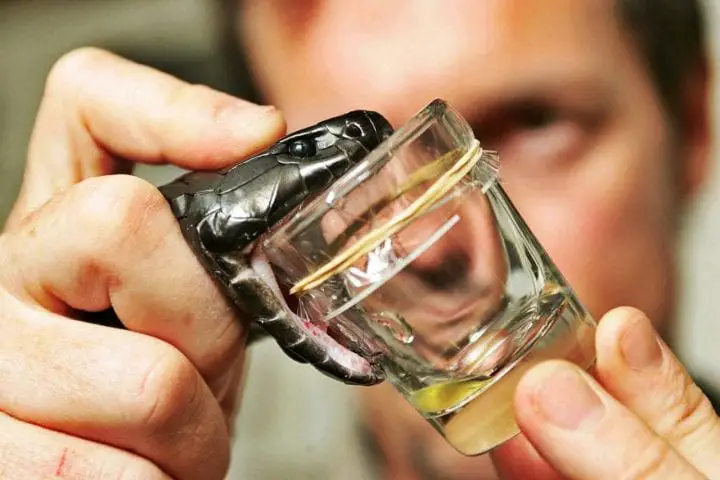
ViralPortal
The venom is also known to have the ability to kill a full-grown man within the period of about an hour. This is especially disconcerting knowing that getting bitten on an island around 90 miles offshore is surely a death sentence. Bad news for the tourists who might otherwise want a thrilling tropical getaway. It makes sense of the island’s horrible reputation, doesn’t it?
25. More on the venom
The golden lancehead venom has many pharmaceutical purposes. These include things as varied as helping with heart disease and kidney failure to the untangling of blood clots. The medicinal properties of the venom are enough to inspire much future research. These cures range from the large to the small.
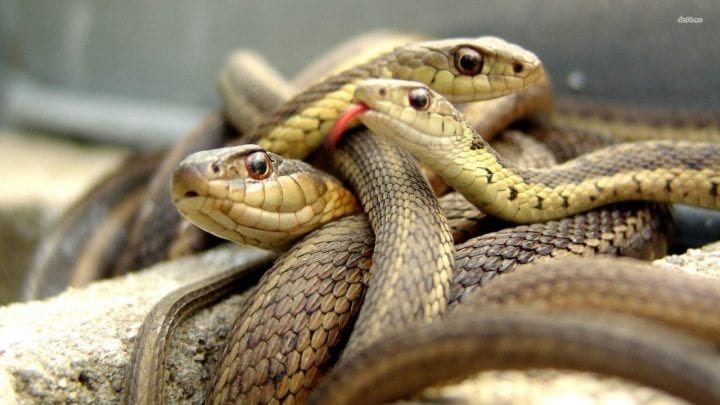
WallpaperSafari
The rampant bio-piracy experienced on the island, however, is actively working against the ability of these researchers to perform their duties. The piracy is not only leading to a diminishing snake population, but also the horrible consequence of habit destruction. And this horrible consequence amplifies the depletion of this beautiful species.
26. Travel to the island
If you want to get to Snake Island from the mainland, the trip is laborious. While if you were to take a speedboat the trip would be swift, most people will do no such thing. This is especially true given that the currents are powerful and capable of destroying many docking vessels.
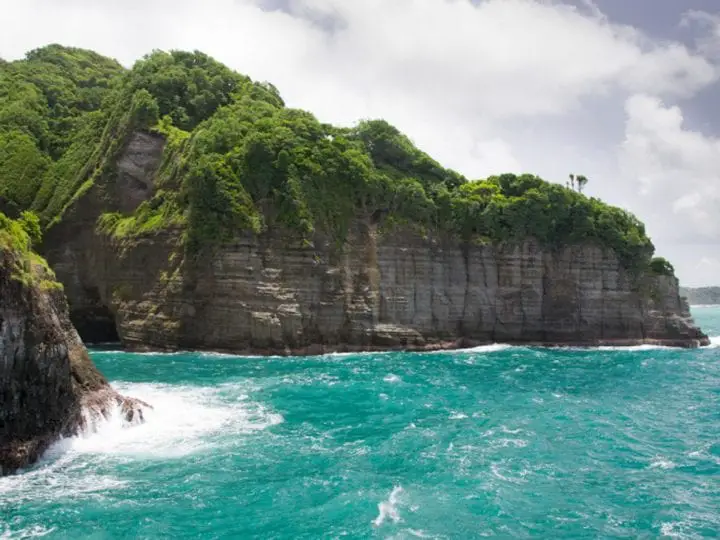
Travel Channel
The safe means of travel then—by giant boat—will work slowly toward the island. And when you travel in a big boat that has to travel slowly, 90 miles is not exactly a quick ride. It will take, in ideal conditions, something around six to seven hours. If you have no sea legs, the journey will be excruciating.
27. Arrival to land
To get from a military vessel to the island, you can’t just dock. In fact, there is no dock. If you want to get on land, you have to move from the boat into a little dingy that you then paddle—also laboriously—toward the land. The result is another bout of added time (and energy) to the trip.
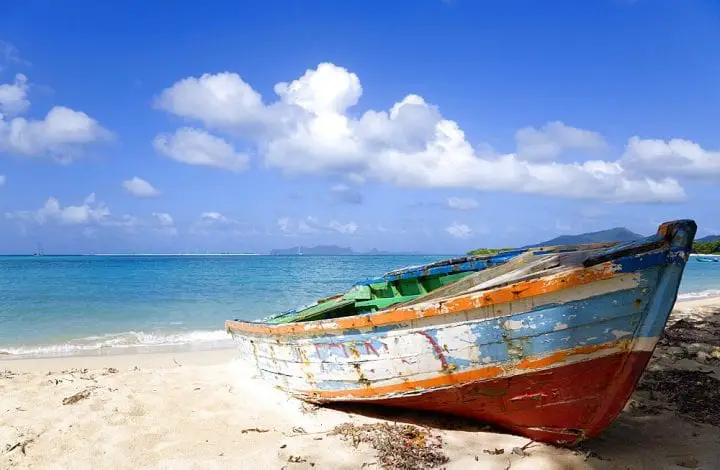
RobertHarding
You can imagine, then, the amount of trouble it must take for the bio-pirate to make their way on land to steal some snakes. Not only must they take a boat that can withstand the vicious currents of the island, but they also must work their way to the island safely. This isn’t exactly the easiest endeavor.
28. The Navy’s take
When asked why the island didn’t foster a family to continue control of the lighthouse the Navy had responded in terse, forbidding tones. What they said, in effect, was that “it was the best to automate the lighthouse.” Ultimately, they suggest that no formal record exists for what happened to the small family that once operated the house.
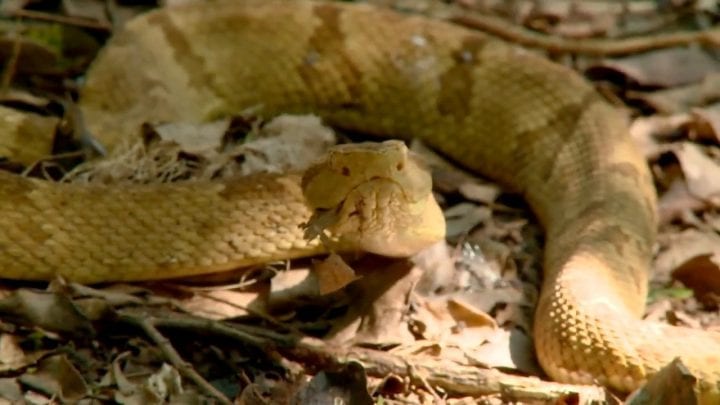
Travel
But since the family’s disappearance in the 1920s, it has been easier to just make the island off limits and inaccessible to the masses. This would, in their eyes, lower the number of snake bites that tourists and residents might succumb to, as well as the medicinal costs that would surely accumulate from their treatment.
29. Other gross things
Other than snakes, the island has some other uncomfortable things. Among these include things as ugly and repugnant as cockroaches. They exist in such a great abundance that walking on the ground is rendered cruchy because of it. Yes, cockroaches make everything worse—including the already terrible snake island.
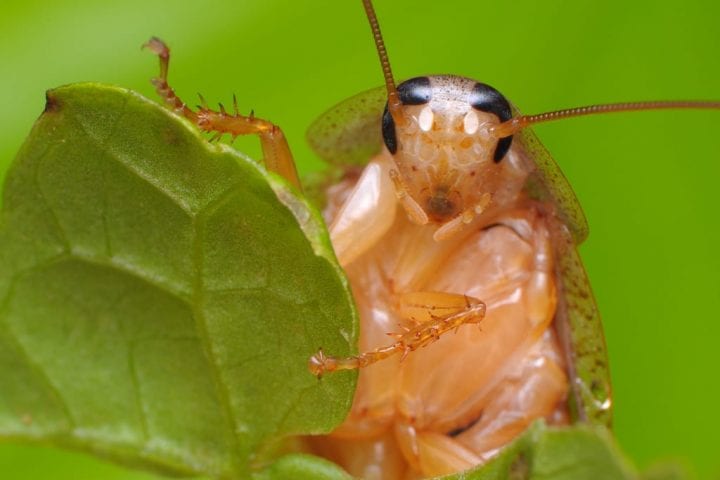
Flickr
If you have a strong aversion to the things that creep, then, it’s probably recommended that you stay away. This, when combined with the strong population of extraordinarily poisonous snakes, makes Snake Island one of the worst places on planet Earth. You wouldn’t, then, want to schedule this for your next romantic rendezvous. Yep.
30. Conclusion
Ultimately, Snake Island is one of the worst places on Earth—that is, unless you’re a snake fanatic with a thirst for death-defying danger. In this case, we might recommend a visit. But even then, you’ll have to get permission from the Brazilian government. And then, on top of that, you’d have to acquire a doctor brave enough to travel with you.
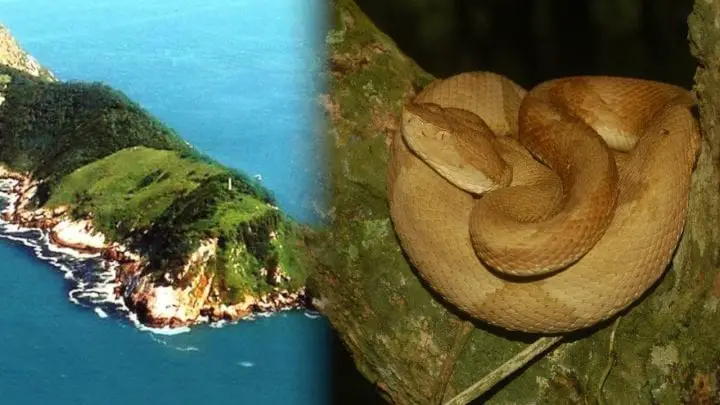
StyleBaby Fun
In reality, you should be happy that the government makes it so difficult to get there. The place is terrifyingly dangerous. It has the densest population of snakes on Earth, and most of these snakes are poisonous. But its value to the scientific community, and nature’s splendor, is what makes this island truly amazing.